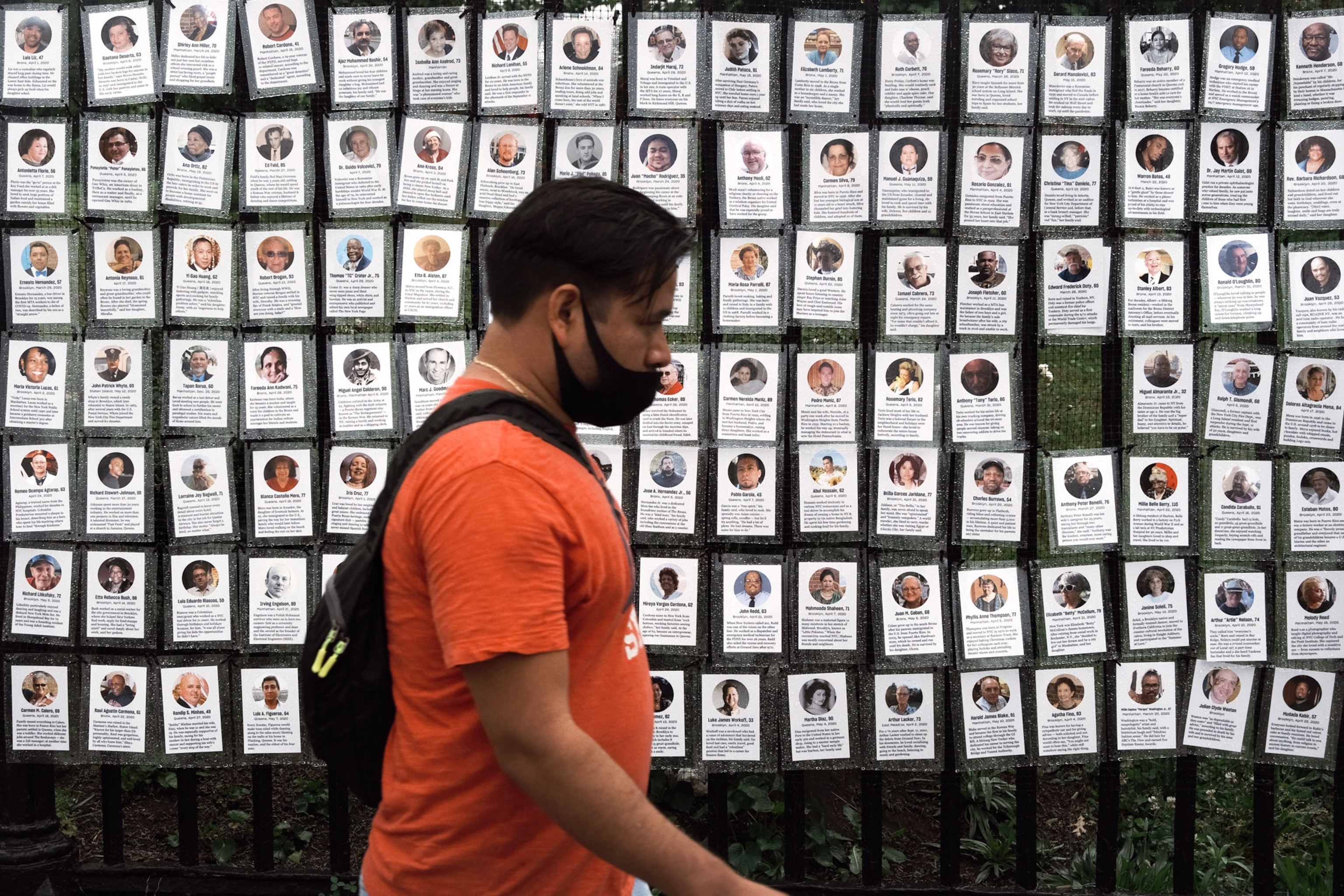
The U.S. surpasses 600,000 deaths due to COVID-19
Even as the nation passes another grim milestone, deaths are on the decline. But experts point to slowing vaccinations and relaxing public health restrictions as cause for remaining vigilant.
Today, the U.S. crossed another grim milestone in the COVID-19 pandemic: More than 600,000 Americans have officially lost their lives to the disease, according to data from Johns Hopkins University. It’s a stark reminder of the devastation caused by the coronavirus—even as mortality rates are on the decline throughout the country as the result of a mass immunization campaign. (See our interactive of where U.S. cases are growing and declining.)
As of June 14, the U.S. Centers for Disease Control and Prevention recorded a seven-day average of 331 deaths. That’s down from a peak of 3,579 on January 13, and the lowest the nation has seen since late March 2020. Hospitalizations have also been decreasing.
If U.S. vaccinations continue on their current trajectory, the country should reach herd immunity in the fall, which would greatly rein in further deaths. Herd immunity is the threshold when the virus cannot easily spread because enough people have built up resistance through vaccinations or natural infection. Experts estimate that the country will reach that threshold when 65 to 80 percent of the population is fully vaccinated; as of June 14, 52.4 percent of Americans have received at least one dose. (Here’s what happens if the U.S. can’t reach herd immunity.)
However, vaccination rates are not equal across the country, and new cases are rising noticeably in places where vaccination rates are lower, according to an analysis released on June 14 by the Washington Post. Hospitalization rates are also significantly higher in states where vaccinations are low, the Post reports. (Find out why the next phase of the pandemic in the U.S. will be marked by localized outbreaks.)
“The closer we get to having more people vaccinated, the more protected unvaccinated people will be,” says Michael Osterholm, director of the Center for Infectious Disease Research and Policy at the University of Minnesota.
Going numb
Psychologically, it's easy to become numb to such huge numbers because the human brain simply isn’t wired to process them. Experts say that this response likely evolved as a coping mechanism: Millions of years ago, humans didn’t know about the disasters afflicting far-flung parts of the world and instead learned to focus on themselves and their communities.
The long and uncertain nature of a pandemic also dulls our sense of shock. Neurons in the brain fire when something novel happens, but they stop noticing after a while, says Elke Weber, who studies how people make decisions when facing risks and uncertainty. The brain also copes with stress by shutting out unpleasant thoughts.
“The human species is really adaptive,” Weber told National Geographic when the U.S. recorded its 200,000th death in September. “If you think about people living in a war zone, the kind of thing that was once appalling becomes normal.”
It’s particularly difficult to process the enormity of these losses as Americans seek a return to their normal lives. With vaccinations rising and cases falling, many communities across the country are reopening—and people are feeling the lingering psychological effects of more than a year of restrictions and fear.
Still, it's important that the country stay vigilant even as death rates fall. For one, the 600,000 mark is likely not even the true U.S. death toll. This figure can be notoriously hard to calculate because of missed diagnoses—particularly early in the pandemic when tests were not widely available—and irregularities in tracking the data. The coronavirus has also caused an untold number of indirect deaths that may not have been recorded, such as deaths among people who avoided seeking medical care for other illnesses due to the pandemic. (Here’s what we’ll need to find the true COVID-19 death toll.)
The global toll
Worldwide, the death toll has risen to more than 3.8 million people. But it might take even longer to assess the true numbers, considering that other countries face additional challenges tracking data due to a lack of resources and, in some cases, a lack of transparency. In 2019, the World Health Organization found that about two-thirds of all countries lack the systems needed to reliably count births and deaths. (How scientists hope to fix the global disparities in assessing the COVID-19 death toll.)
The lack of robust data on all COVID-19 deaths could have dangerous consequences, especially as more state and local governments and business in the U.S. ease restrictions, and an exhausted nation starts considering international travel. More contagious virus variants, including the Delta variant that fueled India’s latest surge, are still spreading throughout the country. Pockets of the U.S. remain unvaccinated, while many places around the world are struggling to get access to vaccines.
“The more it’s spreading in other countries, it gives opportunity for there to be mutations that are more virulent and fruitful,” says Amber D’Souza, professor of epidemiology at the Johns Hopkins Bloomberg School of Public Health. This is why vaccination is so important, she adds.
“Americans have a such a great can-do attitude,” D’Souza says. “To think that we’re going to have a vaccine that works and not achieve high rates that other countries are clamoring for and would be able to do if they had access to this vaccine—I’m really hopeful that we’ll pull together and get there.”








